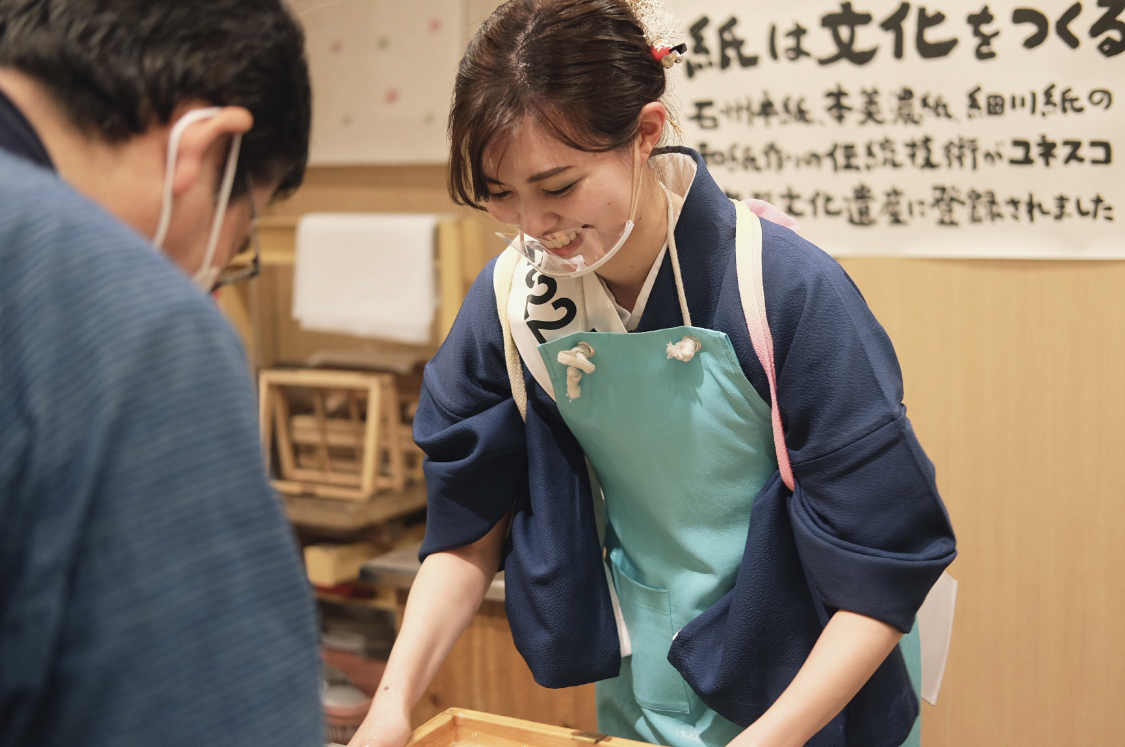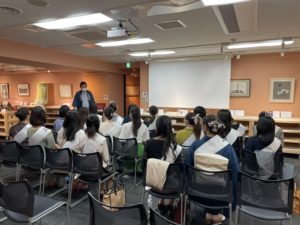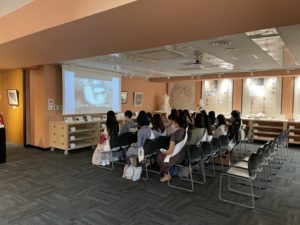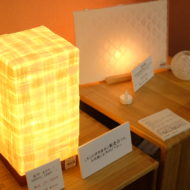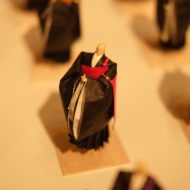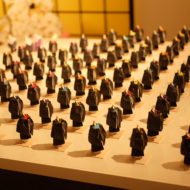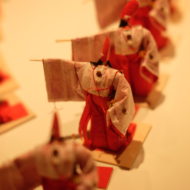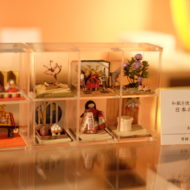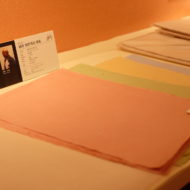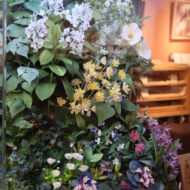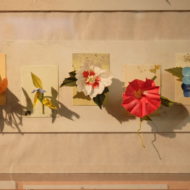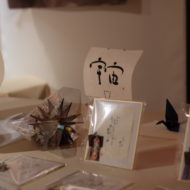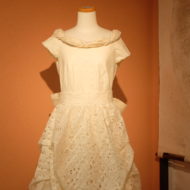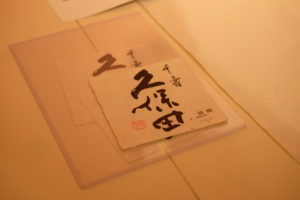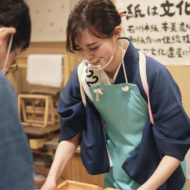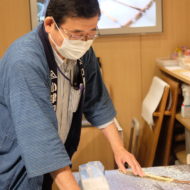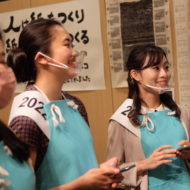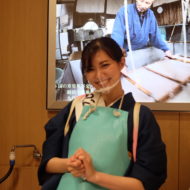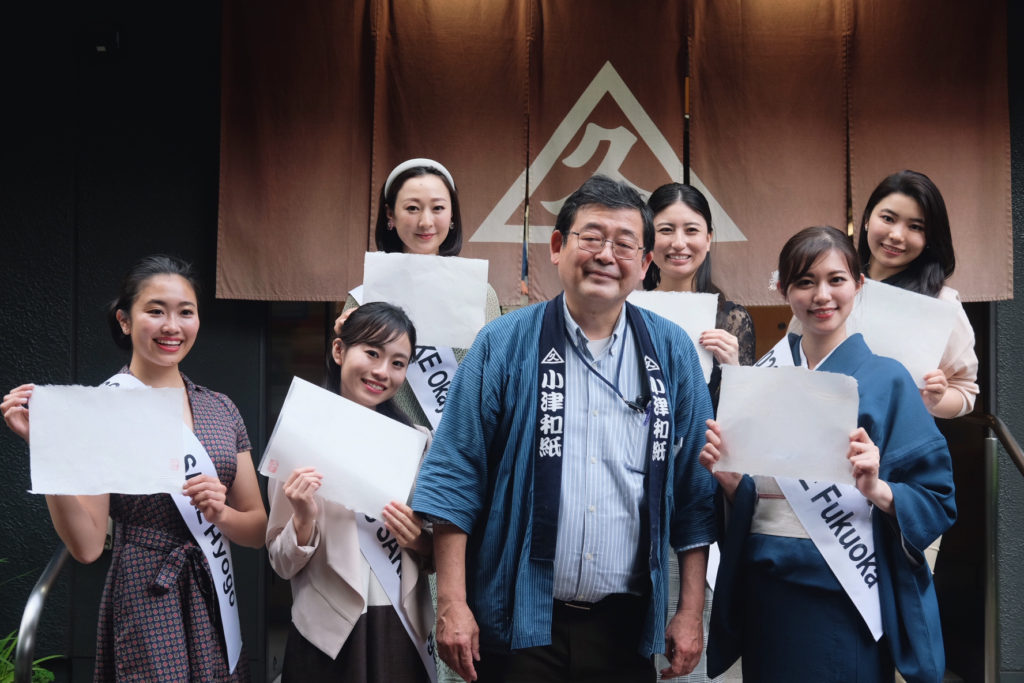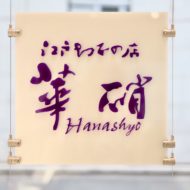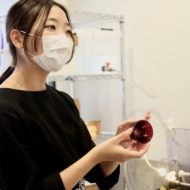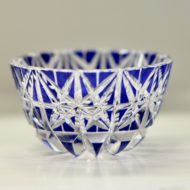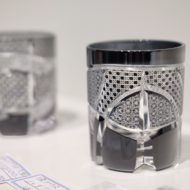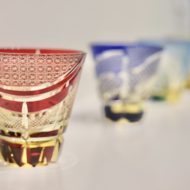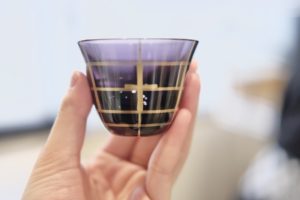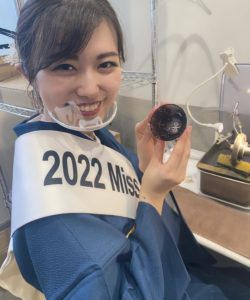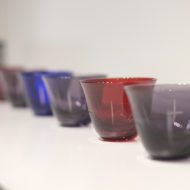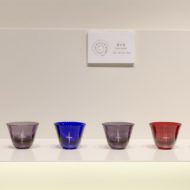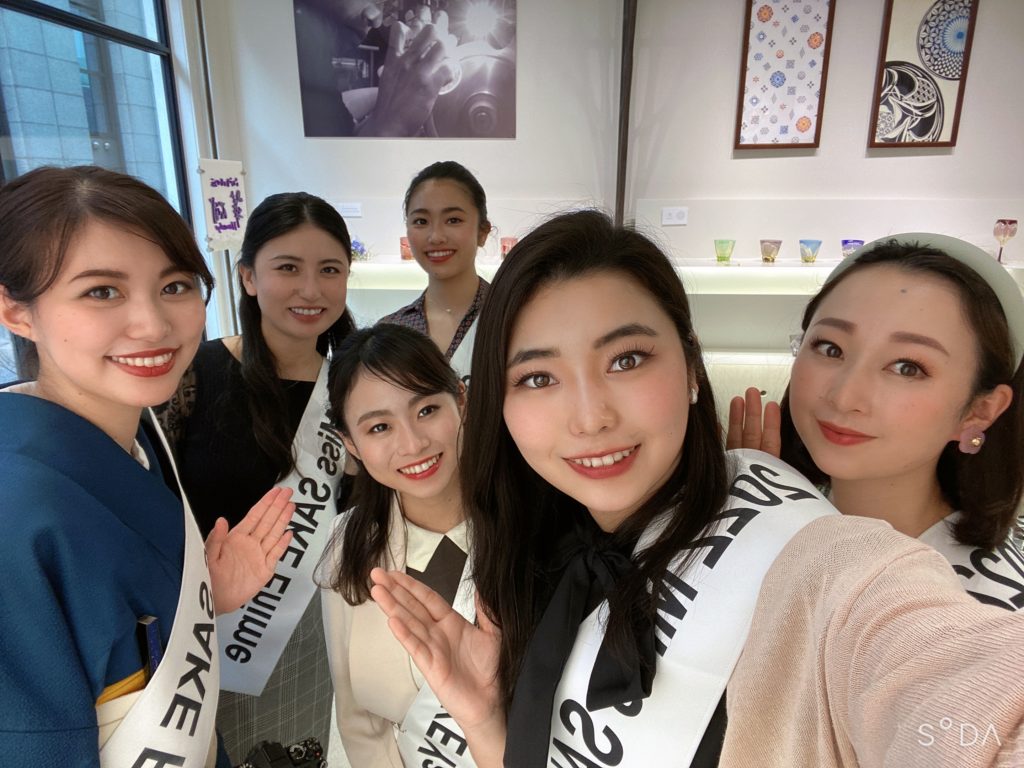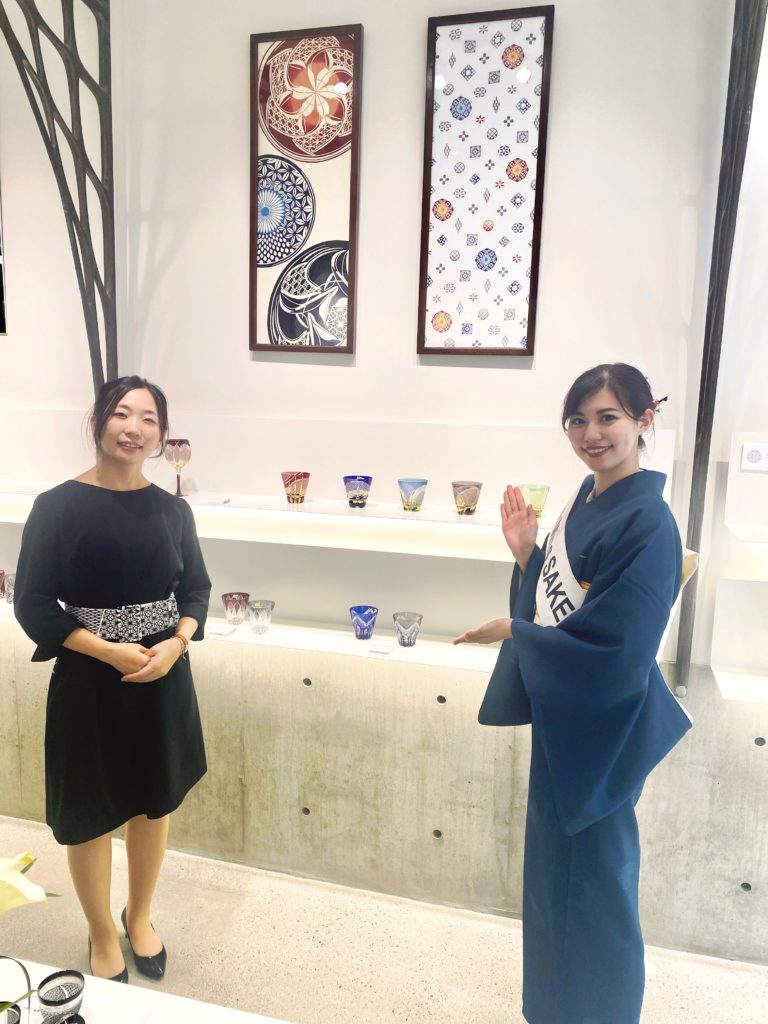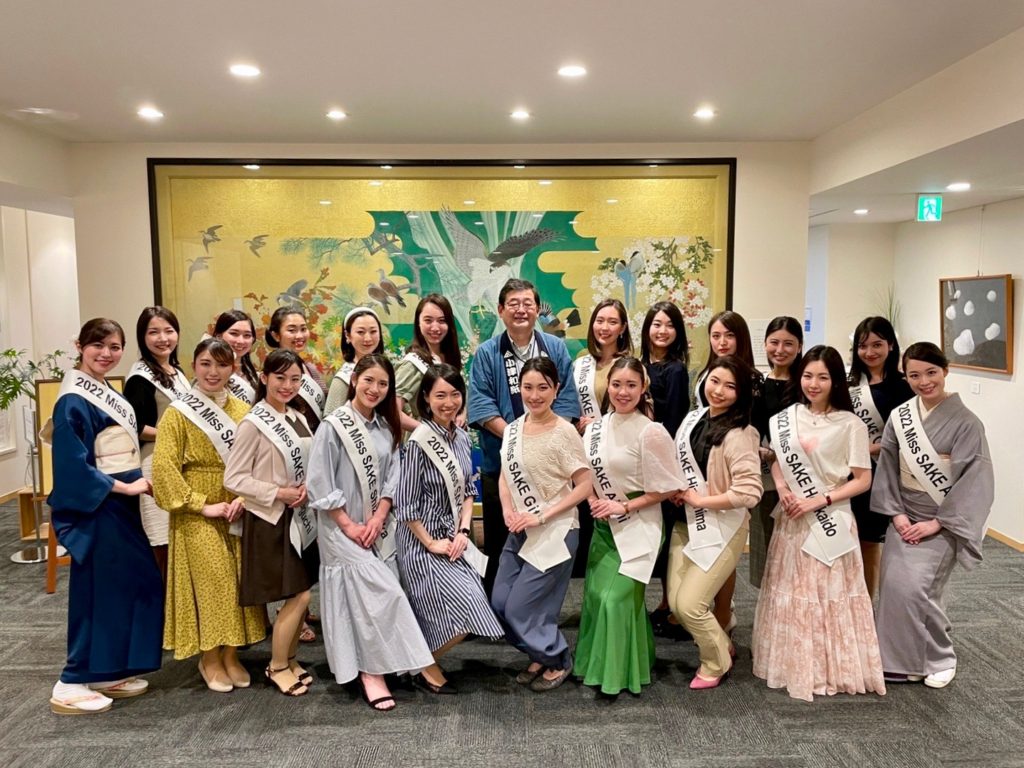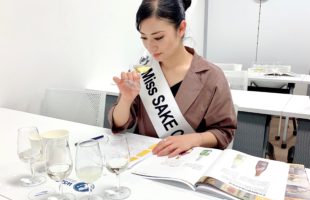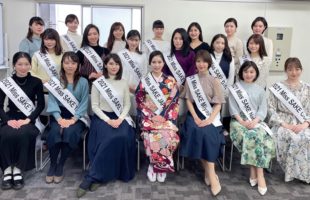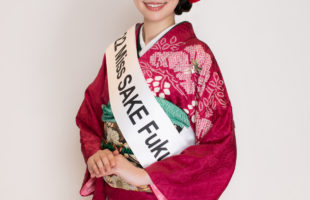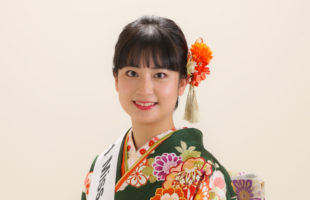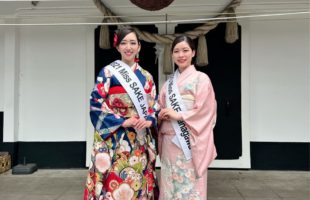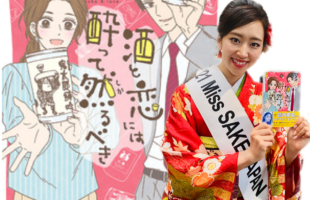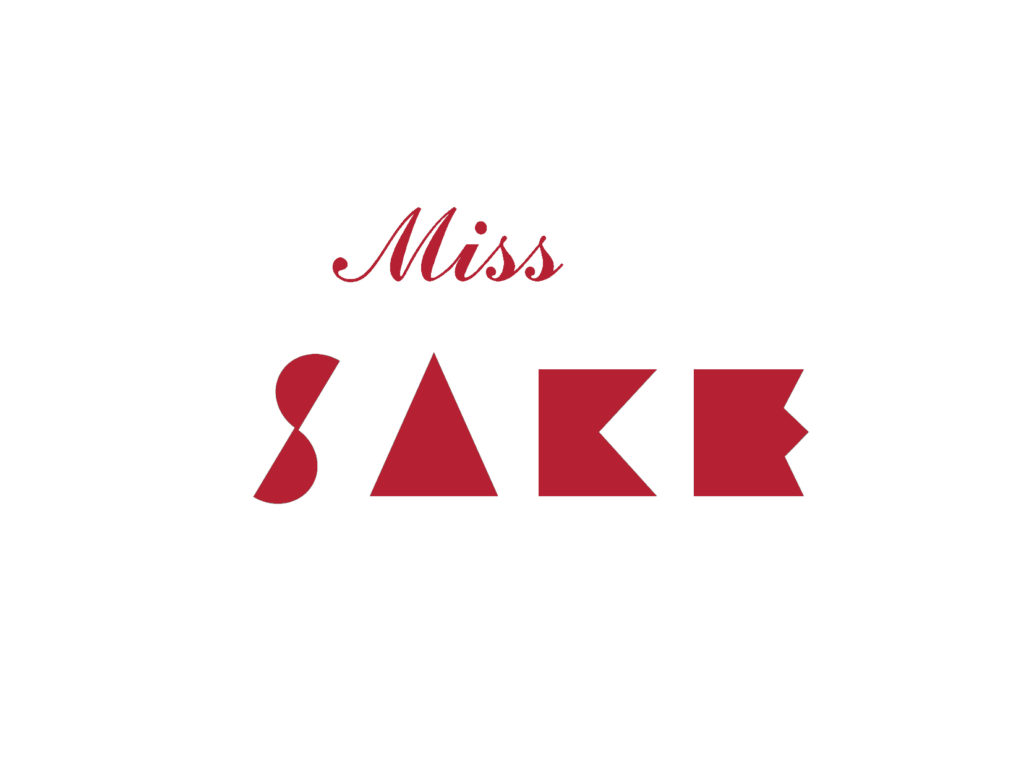第9回ナデシコプログラムレポート
[English below]
皆さま、こんにちは。
2022 Miss SAKE 福岡 白石 萌莉です。
先日、第九回ナデシコプログラムに参加してまいりましたので、ご報告をさせていただきます。
本記事では、以下内容についてご紹介させていただきます!
日本橋伝統工芸品見学
今回のナデシコプログラムでは、承応二年(なんと1653年…!)に創業と、大変長い歴史を持つ東京・日本橋 和紙の専門店の小津和紙様にて学びを得る機会を頂きました。
書道において半紙に最初の一筆を置く瞬間、読んでいる本のページを捲る瞬間、お気に入りのノートに自分の考えを記す瞬間。
デジタルが主流になりつつある世の中ではありますが、紙というものはいつだって私に心躍る体験を提供し続けてくれるものであります。
それ故に、今回の小津和紙様でのお講座は私にとって大変興味をそそられるものでございました。
まず最初に、小津和紙 高木様より最初に和紙の作り方についての講義が。
今回作り方をお勉強させていただいたのは、岐阜県美濃市を中心につくられ、「日本三大和紙」のひとつに数えられている「美濃和紙」。
調べてみると、中でも厳選した素材で手漉きされる「本美濃紙」の技術は、ユネスコ無形文化遺産に登録され、国宝級の古文書や絵画の修繕に使用されるほどだそうです。
和紙の作り方を学んだ感想として、一枚の和紙にこんなに手間暇がかかっていることを不勉強ながら初めて知ったため、大変驚きました。
こうぞという原料を用い、表面の黒皮を用いて和紙は作成をされるのですが、なんと100kgのこうぞからわずか4kgほどの紙しか(!)作ることができないそうなのです。
作りもその殆どが手作業にて、こうぞの皮を丁寧に剥き、柔らかくなるまで煮て、神経を払いながら塵を取り除き、一枚一枚漉き上げて…と大変な工程。
漉き上げる工程にて縦と横に揺り動かして幾重にも繊維を重ねるため、薄くて丈夫な美濃和紙ができるのだそうです。日本人の精神性が反映されるような、そんな美しい文化だと感じました。
※普段は撮影禁止とのことですが、今回プログラムのために特別に撮影の許可をいただきました。
ランプや人形、美しい花々、そしてなんと和紙でできたウェディングドレスまで!
そしてなんと、誰もが知るかの有名な日本酒のラベルにも使用されているとのこと。
和紙は「薄くて丈夫」という特徴を持っているからこそ、応用のバリエーションが幅広く様々な可能性を秘めているのだと胸を打たれ、日本の伝統文化の素晴らしさにただただ感服いたしました。
和紙梳き体験
同じ建物内には実際に和紙梳きを体験できる場所があり、高木様直々のご指導の元、和紙を作らせていただくことに。
実際にやってみると…これがなかなか難しい!
和紙はとても繊細なので、少しでも躊躇ったり傾けたりすると和紙がよれてしまいます。
まさにこれが「職人技」なのだと実感しました。
私が作った和紙は残念ながら盛大によれてしまったのですが(笑)
高木様の「Oh!Mount Fuji!It’s “my design”!(この形は富士山だね!これは失敗じゃなくて私だけのこういうデザイン!)」とユーモアたっぷりに言ってくださり、そんな優しさ溢れるお言葉も含めて素敵な体験をさせていただきました。
紙の歴史
古くは中国から始まった手漉き和紙、それまで木簡に字を書いていた日本では飛鳥時代から国産で紙が作られたそうです。
聖徳太子時代から何を取り決めても口伝だったところから、紙の伝来と共に「記録をする」ということができるようになり、憲法など複雑な記録もその時代のものから残っているのだとか。
鎌倉時代には今のように贈り物を「紙で包む」という風習が生まれ、明治時代からは紙幣が紙に。
その頃は丈夫な手隙和紙で紙幣が作られており、徳川家光将軍の時代から続く小津和紙様では紙幣に作られる和紙も作られていたのだとか!
そんな脈々と続く日本の伝統文化の歴史を感じることのできる素敵な体験をされたい方は、ぜひ日本橋にあります小津和紙様まで足をお運びください。
海外の方々にも大変人気だそうで、海外からの観光客の方もたくさんいらっしゃるそうです!
▼小津和紙様
https://www.ozuwashi.net/
高木様、貴重な体験をさせていただきありがとうございました。
江戸切子作成体験
江戸切子の店 華硝 後藤 早合里様より、江戸切子の作り方を学びました。
江戸切子が生まれたのは、名前のとおり江戸時代末期の日本橋。
硝子職人の加賀屋久兵衞様によって創出された伝統工芸であり、江戸文化を象徴する紋様を色付きガラスのカットで表現します。
華硝様では、クリスタル等の環境負荷の高い鉛を含むガラスを使わず、天然の砂で出来たソーダガラスを使い、独自の技術で江戸切子を制作していらっしゃるそうです。
驚くべきは、こちらの美しい作品の数々がすべて手作業で作られていること!
こんなに繊細な模様が全て手作業だなんて…。
和紙にも通ずることですが、本当に日本の伝統技術は素晴らしいです。
とはいえ、素人の私たちがこんなに繊細な模様を1日で作ることはできないため、簡単な模様に挑戦。下書きの線を入れていただき、こちらに沿って刃を当てていきます。
よく下書き線を見ながら、ゆっくりと刃をガラスに当てていき、ガラスを少しずつ削っていきます。焦らず、丁寧に丁寧に…。
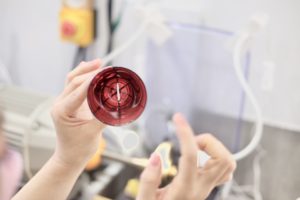 完成です!
完成です!
かなり集中して取り組んでいたので、達成感と共に思わずにこにこのこんな表情。
みんなで作った作品を並べてみたのですが、同じ模様で作っていても、一人一人の彫る線に特徴が表れていて大変見応えがあります。
自分で作った江戸切子で、大好きな日本酒を呑むのが、本当に楽しみです!
こちらの江戸切子作りもお店にて体験することができますので、是非足を運んでみてください。
▼江戸切子の店 華硝様
https://www.edokiriko.co.jp/school/
後藤様、貴重な体験をさせていただきありがとうございました。
最後に
文中でも何度も記載させていただきましたが、今回のナデシコプログラムでは「日本の手仕事の美しさ」をより強く深く実感することができました。
お酒をより美しく楽しむための江戸切子や、和食の際に懐紙としても活躍する和紙など、日本の伝統的な文化と日本酒は切っても切り離せないものです。
私たちMiss SAKEは、日本酒と日本文化のアンバサダー。
日本酒はもとより、世界に誇る日本の美しい手仕事にも造詣を深め、国内外に魅力を届けることができる文化の担い手となれるよう、精進してまいります。
小津和紙様と華硝様におかれましては、このような機会を賜ったこと、心より感謝申し上げます。
2022 Miss SAKE 福岡 白石萌莉
“Touch the beautiful handcrafts of Japan that we can be proud to show to the world.” The 9th Nadeshiko Program
2022 Miss SAKE Fukuoka MOERI SHIRAISHI
[English below]
Hello everyone, my name is Moeri Shiraishi from 2022 Miss SAKE Fukuoka.
I would like to report on my participation in the 9th Nadeshiko Program the other day.
In this article, I would like to introduce the following contents!
Visit to Nihonbashi traditional crafts – at Ozu Washi
Washi carding experience – Mr. Kiyoshi Takagi from Ozu Washi
Edo kiriko making experience – Ms. Sayuri Goto from Hanasho
### Visit to Nihonbashi Traditional Crafts
This Nadeshiko program offered us an opportunity to learn at Kozu Washi, a specialty store of Japanese paper in Nihonbashi, Tokyo, which has a very long history, having been established in 1653.
The moment you make the first stroke on a piece of calligraphy paper, the moment you turn the page of a book you are reading, or the moment you write down your thoughts in your favorite notebook.
Although we live in a world where digital technology is becoming the mainstream, paper has always provided me with an exciting experience.
That is why I was so intrigued by this lecture at Ozu Washi.
First of all, Mr. Takagi of Ozu Washi gave us a lecture on how to make washi paper.
What I learned how to make this time was “Mino Washi,” which is made mainly in Mino City, Gifu Prefecture, and is one of the “three Yamato papers” of Japan.
I learned that the technique of “Hon-Minoshi,” which is handmade from carefully selected materials, is registered as a UNESCO Intangible Cultural Heritage and is even used to repair ancient documents and paintings that are classified as national treasures.
As an impression of learning how to make washi, I was very surprised to know for the first time that so much time and effort is spent on a sheet of washi, even though I am not a student of washi.
Washi is made from a raw material called kouzo, and the surface black peel is used to make the paper. It is said that only 4 kg of paper can be made from 100 kg of kouzo.
Most of the work is done by hand: the kouzo bark is carefully peeled, boiled until soft, and then the dust is removed with great care, and then each sheet is made one by one… a very difficult process.
In the process of making the paper, the fibers are shaken vertically and horizontally and layered in layers, so that thin and strong Mino washi can be made. I felt that it is such a beautiful culture that reflects the spirituality of the Japanese people.
*Although it is usually forbidden to take photographs, we received special permission to do so for this program.
Lamps, dolls, beautiful flowers, and even a wedding dress made of Japanese paper!
And what’s more, it is also used for the label of a famous Japanese sake “Kubota” that everyone knows.
I was struck by the wide range of possible applications of washi because of its thinness and durability, and I was simply amazed at the beauty of traditional Japanese culture.
## Washi carding experience
In the same building, there is a place where visitors can actually try their hand at Japanese paper carding, and under the direct guidance of Mr. Takagi, we were allowed to try our hand at making Japanese paper.
Actually trying it out… it’s quite difficult!
Washi is so delicate that even the slightest hesitation or tilt will cause the washi to slip off.
I realized that this is exactly what “craftsmanship” is all about.
Unfortunately, the washi I made was very badly warped, but Mr. Takagi’s comment, “Oh!Mount Fuji!It’s my design!” He humorously said, and we had a wonderful experience including such kind words.
### History of paper
Handmade Japanese paper started in China in ancient times, and paper was produced domestically in Japan from the Asuka period, when people used to write on wooden writing paper.
From the time of Prince Shotoku, whatever arrangements were made were oral, and with the introduction of paper, it became possible to “make records,” and complex records such as constitutions have survived from that period. In the Kamakura period (1185-1333), the custom of “wrapping gifts in paper,” as we do today, was born, and from the Meiji period (1868-1912), paper money became paper.
At that time, banknotes were made of strong handmade washi paper, and Kozu Washi-sama, which has been in existence since the time of Shogun Tokugawa Iemitsu, also made washi paper used for banknotes!
If you would like to have a wonderful experience to feel the history of Japanese traditional culture, please visit Ozu Washi in Nihonbashi.
I hear it is very popular among overseas visitors as well, and there are many tourists from overseas as well!
https://www.ozuwashi.net/
Thank you very much, Mr. Takagi, for this valuable experience.
## Edo kiriko making experience
We learned how to make Edo kiriko glass from Ms. Sayuri Goto of the Edo faceted glass store, Hanasho.
Edo kiriko, as the name suggests, was born in Nihonbashi at the end of the Edo period.
Edo kiriko is a traditional craft created by glass craftsman Kyubei Kagaya, who expresses patterns symbolizing Edo culture by cutting colored glass.
Instead of using crystal or other environmentally hazardous lead-based glass, Hanasho uses soda glass made from natural sand to produce Edo kiriko glass using their own unique techniques.
What is surprising is that all of these beautiful pieces are made by hand!
It is amazing that such delicate patterns are all made by hand.
As is the case with Japanese paper, traditional Japanese techniques are truly amazing.
However, as amateurs, we could not create such a delicate pattern in a day, so we tried a simple pattern. We were given a draft line to draw on, and the blade was applied along this line.
While carefully looking at the draft lines, we slowly apply the blade to the glass and shave the glass little by little. Carefully and carefully, without rushing….
It’s done!
They were concentrating so hard on their work that they couldn’t help but smile with a sense of accomplishment.
We lined up the pieces that everyone had made, and even though they were made with the same pattern, each person’s engraved lines showed their unique characteristics, making them very impressive.
I am really looking forward to drinking my favorite sake with the Edo kiriko glass I made!
You can try your hand at making your own Edo kiriko glass at the store, so please visit there.
https://www.edokiriko.co.jp/school/
Thank you, Mr. Goto, for this valuable experience.
## Lastly
As I have mentioned many times in the text, this Nadeshiko program allowed me to more strongly and deeply realize the “beauty of Japanese handicrafts”
Traditional Japanese culture and sake are inseparable, such as Edo faceting, which makes sake more beautiful to enjoy, and Japanese paper, which is also used as kaishi paper when eating Japanese food.
We at Miss SAKE are ambassadors of sake and Japanese culture.
We will continue to deepen our knowledge not only of sake, but also of Japan’s beautiful handicrafts, which we are proud to offer to the world, and devote ourselves to becoming a bearer of culture that can deliver the charm of sake both domestically and internationally.
We would like to express our sincere gratitude to Ozu Washi and Hanasho for giving us this opportunity.
2022 Miss SAKE Fukuoka Moeri Shiraishi

